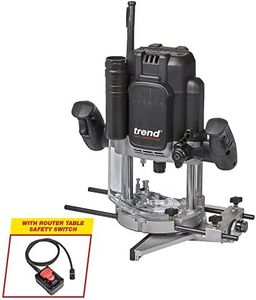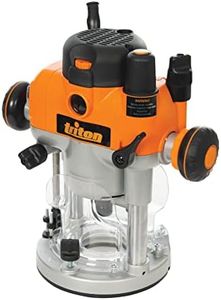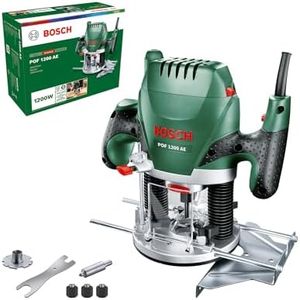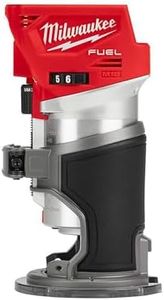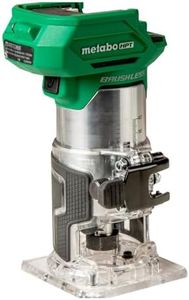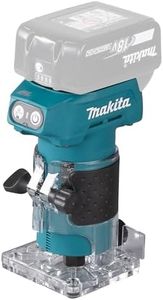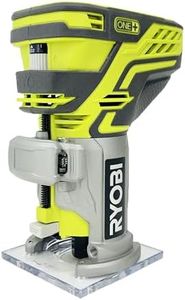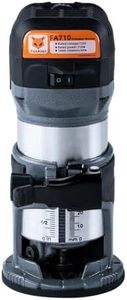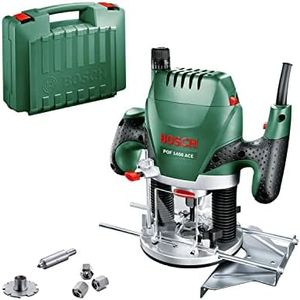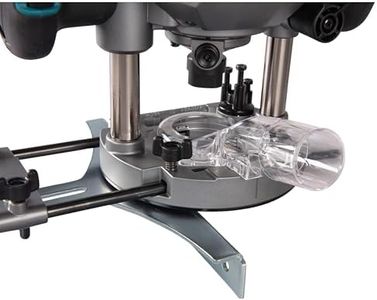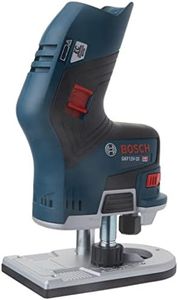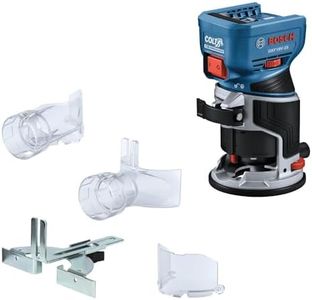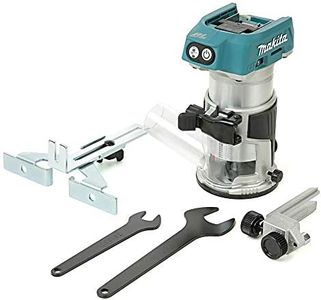We Use CookiesWe use cookies to enhance the security, performance,
functionality and for analytical and promotional activities. By continuing to browse this site you
are agreeing to our privacy policy
10 Best Woodworking Routers
From leading brands and best sellers available on the web.Buying Guide for the Best Woodworking Routers
Choosing the right woodworking router can make a huge difference in the quality and ease of your woodworking projects. Routers are versatile tools used for hollowing out, shaping edges, cutting grooves, and creating intricate patterns in wood. Since there are many types and features to consider, understanding the main specifications will help you find a router that fits your needs, skills, and the types of projects you plan to tackle.Power (Amps or Watts)Power refers to the strength of the router’s motor and affects how easily the tool can cut through various types of wood. Routers come in different power ranges, usually measured in amps or watts. Lower power (about 1-1.25 HP or 6-8 amps) is suitable for light tasks like trimming or edge work. Medium power (1.5-2 HP or 9-12 amps) provides enough force for most hobbyist needs, such as moderate shaping or making slots. High power (over 2 HP or 12+ amps) is best for heavy-duty work or for using large bits for deep cuts. Consider what types of materials and tasks you’ll most often do—a smaller, lighter router is easier to control for fine work, while a more powerful one is preferred for challenging or frequent jobs.
Speed (RPM & Variable Speed Control)The speed of a router is measured in revolutions per minute (RPM). Many routers offer variable speed control so you can adjust the speed depending on your material and bit size. Low-speed routers (about 8,000-15,000 RPM) are generally used for larger bits or dense materials to avoid burning the wood. Higher speeds (18,000-25,000+ RPM) are suited for smaller bits and softer materials. Variable speed is important if you use different bit sizes and materials, giving you flexibility and more control; fixed speed is simpler but less adaptable. If you anticipate working with a variety of woods and bit sizes, variable speed will give you much more versatility.
Router Type (Plunge, Fixed-Base, Combo)Routers come mainly in three types—fixed-base, plunge, and combo kits. Fixed-base routers have a set depth you adjust before starting, making them ideal for edge work and precise cuts. Plunge routers allow you to 'plunge' the bit into the wood at any point, which is useful for interior cuts and patterns. Combo kits offer both bases, letting you switch between fixed and plunge functions. If you mostly work on edge profiles or mounting your router to a table, a fixed-base may be best. For more varied tasks or intricate inlays and mortises, a plunge or combo router offers more flexibility.
Collet SizeThe collet holds the router bit in place and its size determines what bits you can use. The most common sizes are 1/4-inch and 1/2-inch. 1/4-inch collets fit smaller bits, are usually found on lighter, less powerful routers, and are suitable for craft or light-duty tasks. 1/2-inch collets can hold larger, sturdier bits needed for deep cuts and heavy use. Some routers come with both collet sizes for more versatility. Choose a router that fits the bit sizes you expect to use most—1/2-inch is generally more robust and stable for heavy work, while 1/4-inch is fine for detail and lighter work.
Ergonomics and WeightErgonomics refers to how comfortable and easy the router is to handle. A lighter router is easier to control, especially for overhead or extended use, while a heavier router can feel more stable on a table. Look for features like soft-grip handles, balanced weight, and accessible controls. If you expect to use your router for long periods or need fine control, comfort and handle placement are very important. Consider testing how a router feels to hold and operate—your comfort can greatly affect the quality of your results.
Depth AdjustmentDepth adjustment allows you to set how deep the bit cuts into the wood. Precise adjustment is crucial for achieving the right fit and finish in joints, grooves, or patterns. Simple routers may have a basic adjustment system, while others offer micro-adjustments or depth stops for accuracy. If your projects require consistent or repeatable cuts, look for routers with easy, precise depth controls, such as a fine adjustment knob or turret stop. For occasional or rough work, basic adjustment may be sufficient.
Dust Collection CompatibilityDust collection features help manage wood chips and debris created during routing. Some routers have built-in ports for attaching to shop vacuums or dust extractors. Good dust collection can improve visibility, reduce cleanup, and make your workshop healthier. If you plan to use your router indoors or want a cleaner workspace, opt for a router with a dust collection system or a compatible attachment.
